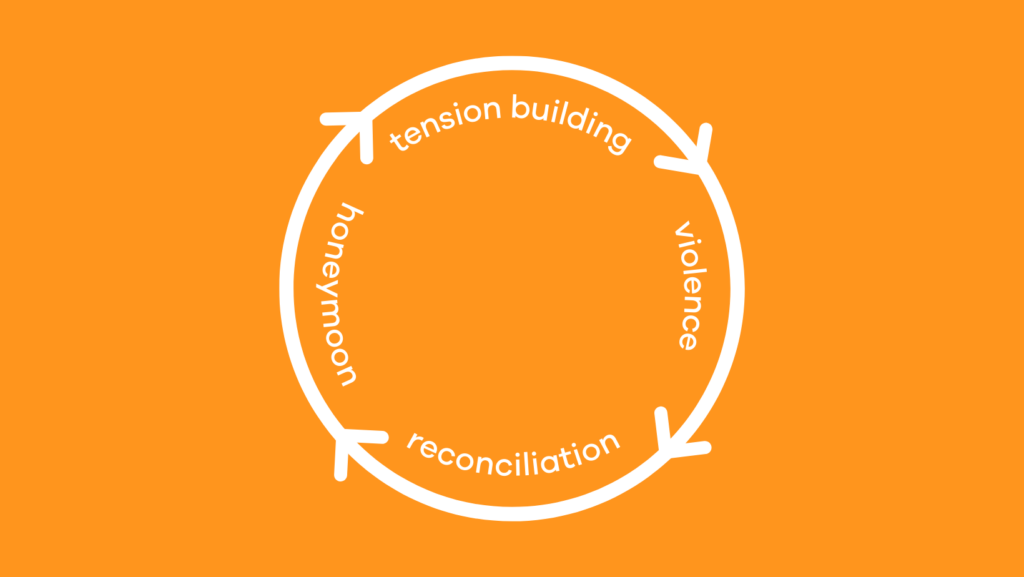
Have you ever wondered why it’s so hard to leave an abusive relationship? The cycle of abuse, also known as the cycle of violence, reveals patterns of behavior which repeat over, and over, and over again, and which can make it difficult for someone to break free. By understanding these stages, we can begin to see how easily someone can feel trapped.
Do any of these patterns listed below sound familiar to you? If so, know that you’re not alone. Oasis exists to help you break free of this pattern. We have a specialist team of wonderful IDVA’s (Independent Domestic Violence Advisors) who will listen to you, talk through your situation, and explore your options so you can feel safe again. Remember, you deserve to feel valued in your relationship.
Our helpline is 0800 917 9948.
Tension building
Abuser‘s behaviour: becomes irritable, starts getting aggressive and yelling, threatens, puts victim down, starts picking a fight, withholds affection, accuses, gaslights.
Victim’s behaviour: (these are variations of fight, flight, freeze and fawn trauma responses). Feels on edge, scared of this familiar feeling. Try to calm down abuser, reason or agree with abuser, avoid abuser, hyper-compliant and nurturing with abuser.
Violence
Abuser’s behaviour: lashes out through verbal, physical, emotional and/or sexual violence. They slam doors, they give victim the silent treatment (stonewalling), throw things, stop victim from leaving, use intimidating body language.
Victim’s behaviour: (these are variations of fight, flight, freeze and fawn trauma responses) Protect themself, call the police, try to calm down abuser, fight back, leave, try to appease and reason with abuser, agree with abuser, try to distract abuser, nurture abuser.
Reconciliation
Abuser‘s behaviour: apologises, makes promises, minimises & tries to justify behaviour, blames the victim, alcohol, drugs, stress. Tries to be intimate, declares love, cries, starts therapy, buys gifts and compliments victim.
Victim’s behaviour: sets up counselling for abuser, drops legal proceedings, agrees to take abuser back, stays or moves back in, forgives.
Honeymoon
Abuser’s behaviour: the violent incident is ‘forgotten’ and no abuse takes place. Things seem calm and peaceful but it usually doesn’t last long until abuser build up tension again…
Victim’s behaviour: feels relief and hope, feels loving and happy again, connected to the person they love again.

